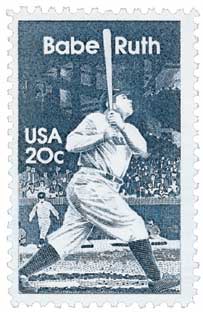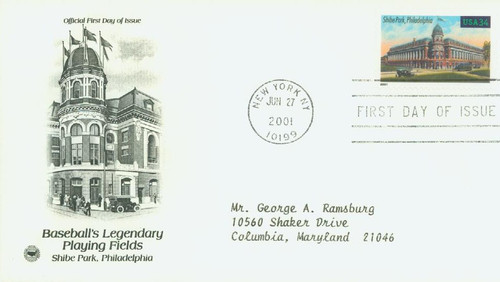
# 3517 - 2001 34c Legendary Baseball Fields: Comiskey Park
34¢ Comiskey Park
Baseball’s Legendary Playing Fields
City: New York, NY, Boston, MA, Chicago, IL, or Detroit, MI
Quantity: 125,000,000
Printed by: Avery Dennison
Printing Method: Photogravure
Perforations: Serpentine Die Cut 11.25 x 11.5
Color: Multicolor
First U.S. All-Star Baseball Game
The game was an event several years in the making. After enjoying a boom in popularity in the 1920s, baseball game attendance dropped dramatically – about 40% – in the early 1930s. And those that did attend games chose the bleachers, which only cost 50¢, over the more expensive box seats.
Soon baseball owners began trying whatever they could to increase attendance. They made smaller rosters, fired coaches, and cut wages. They also offered discounts, free tickets for women, grocery giveaways, and the first-ever night games.
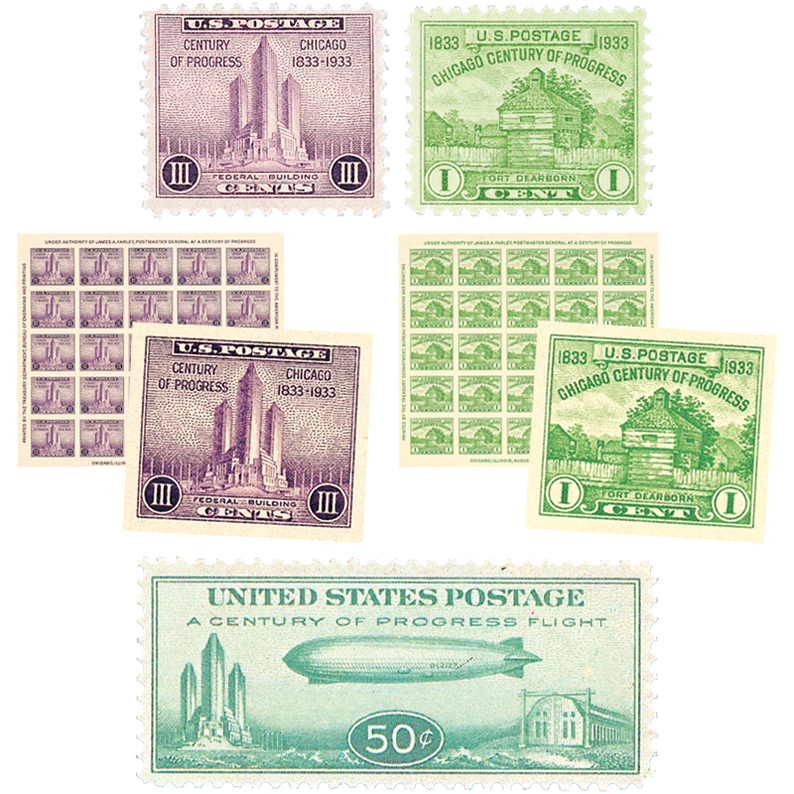
Then in 1933, the city of Chicago was preparing for its world’s fair, the Century of Progress International Exposition. Mayor Edward Kelly was determined to make the fair a success, so he reached out to the published of the Chicago Tribune to suggest holding a major athletic event as part of the events.
The publisher mentioned the idea to his sports editor, Arch Ward, who then suggested a one-time “Game of the Century.” The game would pit the finest players of the American and National Leagues against each other. To further arouse interest, the public would get to vote on each team’s lineup. Ward was so convinced the game would be popular, he told his publisher he could take any losses out of his paycheck. Plus, they announced that all proceeds from the game (totaling $45,000) would go to a charity for retired players.
In the weeks leading up to the game, Ward ran regular stories to promote the game. With ballots printed in papers across the country, several hundred thousand people cast votes for their favorite players. Babe Ruth had the most with about 100,000. Other popular players included Lefty Grove, Jimmy Foxx, Lou Gehrig, Al Simmons and Joe Cronin.
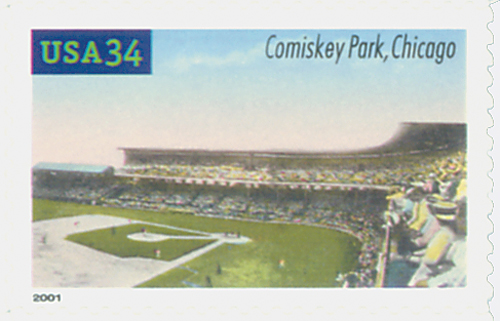
The big day arrived on July 6, 1933. Some 47,595 fans filled Comiskey Park. For many of the players, it was their first time meeting players from the opposing league. No surprise, one of the game’s big highlights was Babe Ruth’s two-run home run in the bottom of the third inning. He also made a dramatic catch against the scoreboard in the eighth. In the end, the American League won the game 4 to 2. Years later, 20 of the 36 players were inducted into the Baseball Hall of Fame, as well as both managers, five coaches, and two umpires.
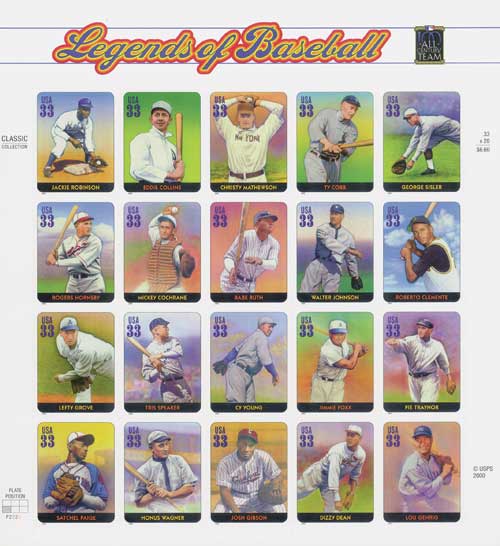
The game, dubbed the “midsummer classic” was so popular it was held again the following year, and every since except for 1945 because of wartime travel restrictions.
Click here and here for brief video clips from the first All-Star Game.
34¢ Comiskey Park
Baseball’s Legendary Playing Fields
City: New York, NY, Boston, MA, Chicago, IL, or Detroit, MI
Quantity: 125,000,000
Printed by: Avery Dennison
Printing Method: Photogravure
Perforations: Serpentine Die Cut 11.25 x 11.5
Color: Multicolor
First U.S. All-Star Baseball Game
The game was an event several years in the making. After enjoying a boom in popularity in the 1920s, baseball game attendance dropped dramatically – about 40% – in the early 1930s. And those that did attend games chose the bleachers, which only cost 50¢, over the more expensive box seats.
Soon baseball owners began trying whatever they could to increase attendance. They made smaller rosters, fired coaches, and cut wages. They also offered discounts, free tickets for women, grocery giveaways, and the first-ever night games.

Then in 1933, the city of Chicago was preparing for its world’s fair, the Century of Progress International Exposition. Mayor Edward Kelly was determined to make the fair a success, so he reached out to the published of the Chicago Tribune to suggest holding a major athletic event as part of the events.
The publisher mentioned the idea to his sports editor, Arch Ward, who then suggested a one-time “Game of the Century.” The game would pit the finest players of the American and National Leagues against each other. To further arouse interest, the public would get to vote on each team’s lineup. Ward was so convinced the game would be popular, he told his publisher he could take any losses out of his paycheck. Plus, they announced that all proceeds from the game (totaling $45,000) would go to a charity for retired players.
In the weeks leading up to the game, Ward ran regular stories to promote the game. With ballots printed in papers across the country, several hundred thousand people cast votes for their favorite players. Babe Ruth had the most with about 100,000. Other popular players included Lefty Grove, Jimmy Foxx, Lou Gehrig, Al Simmons and Joe Cronin.

The big day arrived on July 6, 1933. Some 47,595 fans filled Comiskey Park. For many of the players, it was their first time meeting players from the opposing league. No surprise, one of the game’s big highlights was Babe Ruth’s two-run home run in the bottom of the third inning. He also made a dramatic catch against the scoreboard in the eighth. In the end, the American League won the game 4 to 2. Years later, 20 of the 36 players were inducted into the Baseball Hall of Fame, as well as both managers, five coaches, and two umpires.

The game, dubbed the “midsummer classic” was so popular it was held again the following year, and every since except for 1945 because of wartime travel restrictions.
Click here and here for brief video clips from the first All-Star Game.







